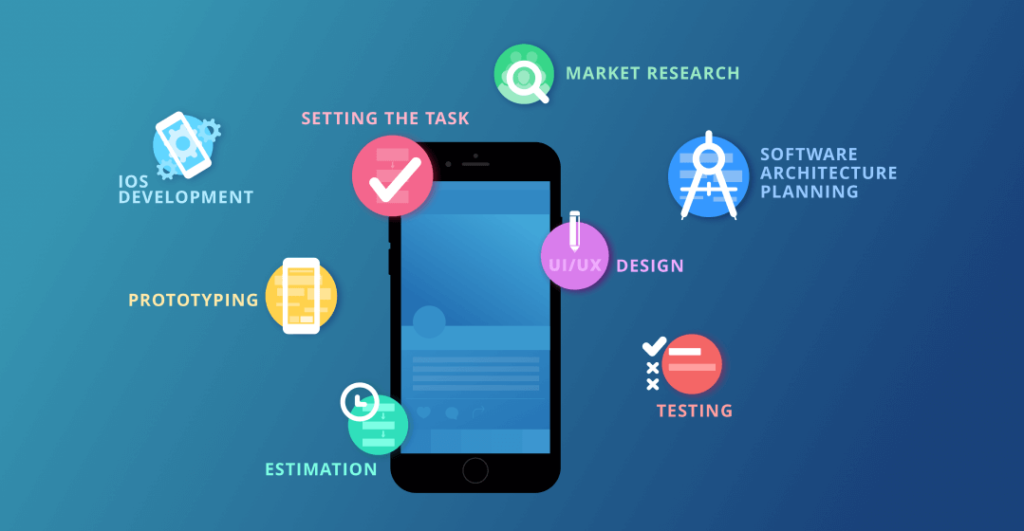Developing quality iOS apps requires attention to detail, adherence to coding standards, and a focus on user experience. With millions of apps available on the App Store, it’s essential to stand out by delivering an exceptional user experience that is stable, secure, and performs well. In this article, we will explore some best practices for developing high-quality iOS apps that will help you create robust, user-friendly, and successful applications.

Developing quality iOS apps
Plan, Design and Analyze for User Experience
Before diving into the code, spend time planning and designing your app to ensure a seamless user experience. Understand your target audience, define user personas, and create user flows and wireframes. Pay attention to usability, intuitive navigation, and appealing visual design. Prioritize user-centricity and strive to deliver an engaging and satisfying experience.
- Define clear goals and objectives for your app.
- Create wireframes and prototypes to visualize the app’s structure and flow.
- Prioritize user experience (UX) and design an intuitive user interface (UI).
Follow Apple’s Human Interface Guidelines
Apple provides Human Interface Guidelines (HIG) that outline the recommended design principles and standards for iOS apps. Familiarize yourself with these guidelines and ensure your app follows them. Adhering to the HIG not only ensures a consistent and familiar user experience but also improves the chances of your app getting approved on the App Store.
- Adhere to Apple’s design principles and guidelines for iOS app development.
- Use native UI elements, patterns, and interactions to provide a familiar experience.
- Maintain consistency in design and behavior across the app.
Use Swift and Modern iOS APIs
Swift is the preferred programming language for iOS app development. It offers safety, performance, and modern language features that can enhance your productivity and code quality. Leverage the power of Swift and use the latest iOS APIs and frameworks to take advantage of the platform’s capabilities and deliver a superior user experience.
Maintain Code Quality and Readability
Writing clean, readable, and maintainable code is crucial for long-term success. Follow coding best practices, such as using meaningful variable and function names, organizing code into logical modules, and properly documenting your code. Developing Quality iOS Apps Use consistent formatting and indentation to improve code readability and reduce the chances of introducing bugs.
- Follow established coding conventions, such as Apple’s Swift API Design Guidelines.
- Break code into modular components with clear responsibilities.
- Use meaningful names, comments, and documentation to enhance code readability.
- Write unit tests to ensure code correctness and facilitate future maintenance.
Implement Model-View-Controller (MVC) Architecture
The MVC architecture is widely used in iOS app development for its separation of concerns and maintainability. Follow the MVC pattern to separate your app’s data (Model), user interface (View), and business logic (Controller). This separation allows for better code organization, easier debugging, and scalability.
- Implement proper error handling to provide meaningful feedback to users.
- Use exceptions sparingly and handle them gracefully.
- Log errors and exceptions for easier debugging and issue resolution.
Embrace Unit Testing
Unit testing is essential for ensuring the reliability and stability of your app. Write unit tests to verify the behavior of individual components, functions, and classes. Use frameworks like XCTest to automate testing and catch potential bugs early in the development process. Continuous integration and test-driven development (TDD) practices can further enhance the effectiveness of unit testing.
- Perform comprehensive testing, including functional, usability, and edge case testing.
- Automate testing wherever possible to improve efficiency and reliability.
- Leverage Xcode testing frameworks, such as XCTest and XCUITest, for unit and UI testing.
Optimize Performance
Developing Quality iOS Apps Performance is a critical aspect of app development. Optimize your app’s performance by minimizing resource usage, optimizing algorithms, and avoiding unnecessary computations. Use profiling tools like Instruments to identify performance bottlenecks and optimize critical sections of your code. Consider techniques like lazy loading, caching, and asynchronous operations to enhance the responsiveness of your app.
- Profile your app using Xcode Instruments to identify performance bottlenecks.
- Optimize code and algorithms for faster execution.
- Efficiently manage memory and resources to prevent crashes and improve battery life.
- Create compelling app descriptions and screenshots to attract users.
- Pay attention to keywords and search optimization to improve discoverability.
- Regularly update your app to fix bugs, introduce new features, and respond to user feedback.
Secure User Data
Protecting user data is of utmost importance. Implement secure coding practices, encrypt sensitive information, and follow Apple’s guidelines for data protection and privacy. Use secure communication protocols, authenticate users securely, and handle authentication tokens and credentials with care. Regularly update your app’s dependencies and libraries to address any security vulnerabilities.
- Protect user data and privacy by following secure coding practices.
- Implement appropriate encryption for sensitive data transmission and storage.
- Handle user authentication and authorization securely.
Support Multiple Devices and Screen Sizes
iOS devices come in various screen sizes and resolutions. Design your app to be responsive and adapt to different device sizes. Utilize auto layout and size classes to ensure your app’s user interface looks and functions properly on all devices. Test your app on different devices to identify and fix any layout or functionality issues.
- Stay up to date with the latest iOS versions and adopt new features when appropriate.
- Test your app on different devices, screen sizes, and orientations to ensure compatibility.
- Handle device-specific variations, such as different notch sizes or home indicator gestures.
Continuously Update and Improve
Developing Quality iOS Apps evolves over time, and it’s essential to keep up with the latest updates and technologies.
- Gather user feedback and monitor app analytics to identify areas for improvement.
- Regularly update your app to fix bugs, introduce new features, and respond to user feedback.
- Stay updated with the latest iOS development trends and incorporate new technologies as appropriate.